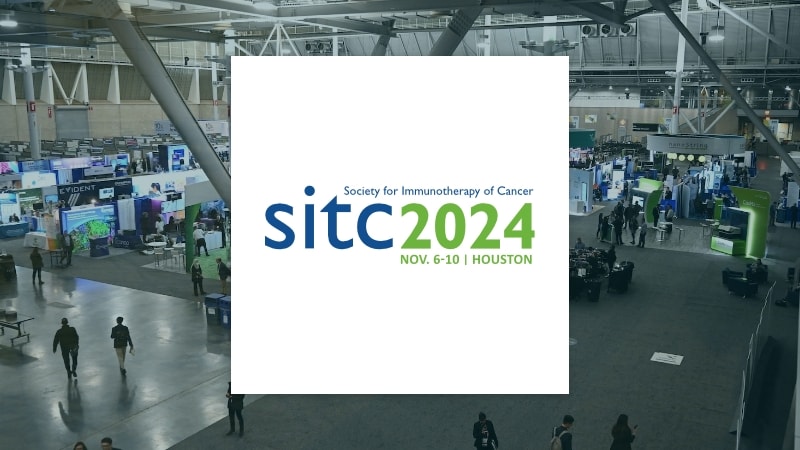Living our mission while planning for the future

[5 MIN READ]
In this article:
-
Providence vice president of System Strategy and Planning explains how strategy has been fundamental to our health system since its earliest days.
-
What sets Providence apart when it comes to strategic planning is an unwavering, steadfast commitment to our mission, values and vision.
-
By engaging leaders and listening to our communities, we develop plans that both respond to current needs and anticipate future needs.
Living our mission while planning for the future
At Providence, we hold steadfast to our mission to serve all — especially the poor and vulnerable. Our mission fuels the work we do within the communities we serve. But programs, services and initiatives are not developed in silos. Rather, they’re part of thoughtful strategic planning.
So, what does “strategy” look like at Providence? We spoke with Lisa Crockett, vice president of System Strategy and Planning. Crockett explains why strategy has always been integral to Providence and how careful planning can lead to positive changes now and in the future.
What does System strategy and planning mean to you?
Crockett: Within Providence, System strategy and planning ensures that we take a thoughtful approach to understanding the needs of the communities we seek to serve and planning how we can address those needs. It includes reflecting on the emerging trends that we see across the health care industry — both areas that present challenges to address, as well as new opportunities to approach our work in innovative ways that will transform care delivery.
Why is strategy important at Providence?
Crockett: Strategic planning has been fundamental to Providence since the early days of our health system. It started with the first Sisters of Providence, who came out West. They surveyed the landscape to understand the needs of the community. And they leaned thoughtfully to prioritize those needs and figure out how best to address them. In some cases, it was work they did themselves. In other cases, it required partnership with others.
When I think about my role as a strategy leader, it’s standing on the shoulders of those who have come before and gone through that thoughtful planning.
Where we are today — 170 years later — is because of the thoughtfulness of many people over the years, planning for the needs of the community and executing those plans. Our challenge now is to figure out what we need to put in place so future generations can stand on our shoulders, as well.
How does the strategic planning process work? And how does Providence make sure it shares the strategy across its communities?
Crockett: Any time Providence seeks to develop a strategic plan, we base the foundation of that plan on our mission, values, vision and promise. That’s always a constant presence — and it leads to a stronger plan. A plan with direction. A plan with purpose.
When Providence thinks about planning for the future, there are a couple of things we do to ensure we have a fully informed picture of where things are going:
We work with leaders across our system
While I lead the System Strategy and Planning team, I don’t have expertise in all the different facets of our organization. Developing a strategic plan for Providence means partnering with many leaders and leveraging their expertise. I can go to each leader and say, “Tell me about the emerging trends and opportunities that you’re seeing from your perspective.”
Each one of us has a piece of the picture. By ourselves, we can only see a limited amount. But when you put all our views together, you suddenly have a full picture of what’s going on and the opportunities to make a difference.
We listen to the needs of the community
Some ways we determine community need come from looking at data and conducting community health needs assessments. For example, we may look at disease prevalence data or usage rates for certain services. We consider technology that’s emerging and the impact it may have on the care we provide.
As changes evolve, we layer them over what we understand about the community. Are communities growing? What are the ages of those in the community? All of it factors into consideration about what a community will need, not just now, but as we look long term and anticipate those needs.
How does the strategy become a reality?
Crockett: There’s an art and science to getting strategy work done. When we’re engaging in the planning process, I often start by reaching out to top leaders across Providence to set up listening sessions where I ask very intentional questions. I take notes from across those different areas and look for common themes or differentiators that might set us apart.
All that work begins to form the draft of the strategic plan, which we then take out to a lot of stakeholders throughout the system. We gather their insights about the draft plan and continue to refine it. Does this feel right? Is this plan reflective of who we are and where we believe our work is going? Does it make us a little uncomfortable? Because that tells me that we’re appropriately challenging ourselves and thinking innovatively about the future.
When you get to the table with others and ask tough questions, that’s when the magic of the plan begins to come to light. But it’s not enough to develop a plan and have something on paper. The strategic plan is a living, breathing document — one that we continue to revisit. We make sure that we’re anchoring to the direction it’s providing and, at the same time, not holding so tightly to it that we miss an off-ramp that could take us to a better destination.
What are some examples of successful programs that happened at Providence because of strategic planning?
Crockett: When I reflect on strategic plans at Providence over the years, it’s impressive the progress we’ve made. Things that were in the plan years or even decades ago are now woven into the fabric of who we are and how we operate.
Likewise, there are new efforts that Providence has adopted as some of our longer-term strategies. For instance:
- Health equity: Several years ago, we adopted a long-term strategy for health equity because we believe in a world where every person has the chance to live their healthiest life. We committed to investing $50 million over five years to improve health equity in our communities. Today this work continues to make strides forward in reducing inequities of care.
- Environmental stewardship: Providence is a leader in environmental stewardship among health systems nationally. Our work is anchored in three frameworks: WE ACT (climate mitigation), We REACH (building climate resilience) and We SHARE (leadership and education). “We know the progress made across the globe in this decade will dictate the long-term health of our planet, which is why we are taking significant action now,” said Rod Hochman, M.D., president & CEO of Providence.
- Diversity, equity and inclusion (DEI): Providence is steadfast in our commitment to diversity, equity and inclusion, and we're now in the second year of a System-wide DEI strategic plan. Our plan is anchored by the belief that you belong at Providence and that, together, we will advance world-class health through human connection through our shared commitment to DEI.
- Mental health access: More recently, we’ve adopted a long-term strategy to improve mental health access. The U.S. Surgeon General has described mental health as the defining public health and societal challenge of our time. It is consistently a top concern within every community health needs assessment across Providence, which is why we have adopted a System-level strategy that will guide Providence’s efforts to create sustainable mental health services that close care gaps and provide high quality, whole person care for our patients, caregivers and community.
Those multifaceted efforts inevitably start from something we identify through the strategic planning process. They are then implemented and worked on throughout our system, and they create the springboard for future strategies and opportunities to better serve our communities.
Where do patients and consumers fit into Providence’s strategy?
Crockett: The importance of patients and consumers for us is always top of mind. A strategic plan, like the one that we have at Providence, isn’t about looking inwardly. It’s about looking outwardly — of knowing and anticipating what folks are needing. We always have to be thoughtful about also listening to the community, walking with them as their trusted health partner, understanding how they want to access and receive care, being able to ease their way, and more.
We have the opportunity to be a voice for those who may not otherwise have one, to make sure that we’re always reflecting their voice, their needs and their priorities within our plans — that has to come first. It ensures that Providence can be their ongoing trusted partner for generations to come.
What strategic initiatives are on the horizon at Providence?
Crockett: We are in the process of developing our Providence 2030 strategic plan. It’s giving us an opportunity to revisit what strategies are going to be most important for the next five years. It’s perhaps a little too early to share the specific changes we’re making to that plan. But I think it's fair to say that it will continue to build on where we have been, while also looking innovatively at how we can transform health. It’s going to be an inspired body of work with a way for everyone to contribute to our mission and our vision of health for a better world.
Contributing caregiver
Lisa Crockett, vice president of System Strategy and Planning at Providence.
Find a doctor
If you are looking for a primary care provider, you can search for one who’s right for you in our provider directory.
Download the Providence app
It’s all in the app: easily stay connected with Providence and your health. With the Providence app, you can schedule appointments, have virtual visits from the comfort of your own home, get health recommendations personalized for you, access your health records and so much more. Learn more and download the app.
Related resources
Fostering equity in mental health
Caring for our common home: Environmental stewardship at Providence
DEI Discussions: Engaging in important conversations around diversity, equity and inclusion
This information is not intended as a substitute for professional medical care. Always follow your health care professional’s instructions.




